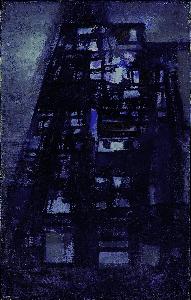Maria Helena Vieira Da Silva
Maria Helena Vieira Da Silva
Place: Lisbon
Born: 1908
Death: 1992
Biography:
Maria Helena Vieira da Silva was a Portuguese-French abstractionist painter, born in Lisbon, Portugal on June 13, 1908. She is considered one of the most important Post-War abstract artists, known for her dense and complex compositions.
Early Life and Training
At the age of eleven, Vieira da Silva began seriously studying drawing and painting at the Academia de Belas-Artes in Lisbon. She later studied painting with Fernand Léger, sculpture with Antoine Bourdelle, and engraving with Stanley William Hayter. This early training laid the foundation for her future success.
Career and Style
Vieira da Silva's characteristic works, produced in the 1930s, were heavily impastoed and overlaid with a complex arrangement of small rectangles. Her style was influenced by Paul Cézanne and the fragmented forms, spatial ambiguities, and restricted palette of cubism and abstract art. She is considered to be one of the most important Post-War abstract artists, although she is not a “pure” abstract painter.
Notable Works and Exhibitions
Some of her notable works include Autoportrait, created in 1930, which showcases her unique style, blending abstraction with figuration. Vieira da Silva also exhibited her work at the Art of This Century gallery in New York, and she received the French government's Grand Prix National des Arts in 1966.
Awards and Recognition
Vieira da Silva was named a Chevalier of the Legion of Honor in 1979. She also created many prints, designs for tapestries, ceramic decorations, and stained glass windows, including a stained-glass window for the St. James church in Reims.
Legacy and Museum Collections
The Árpád Szenes-Vieira da Silva Foundation was inaugurated in Lisbon in 1994, showcasing a large collection of paintings by both artists. Her work can also be found at the Museu Calouste Gulbenkian in Lisbon, which houses one of the world's most important private art collections.
- Vieira da Silva's Autoportrait is a notable example of her work, showcasing her unique style and blending abstraction with figuration.
- The Museu Calouste Gulbenkian in Lisbon houses one of the world's most important private art collections, featuring works from Ancient Egypt to the early 20th century.
- Vieira da Silva received the French government's Grand Prix National des Arts in 1966, making her the first woman to be honored with this award.
of Vieira da Silva's work include her use of abstraction and figuration, as well as her experimentation with different mediums and techniques. Her legacy continues to be celebrated through her work, which can be found in various museums and collections around the world. In conclusion, Maria Helena Vieira da Silva was a pioneering artist who played a significant role in shaping the abstract art movement. Her unique style and contributions to the art world continue to be celebrated and recognized today.
Wikipedia link: Click Here








![La Forge [The Forge] La Forge [The Forge]](https://img.wikioo.org/ADC/art.nsf/get_small_image_wikioo?Open&ra=D4BTPA)





